Attracted by its beautiful rugged coast-line my wife and I often visit Cornwall, particularly in the month of August. It forms a peninsula encompassing wild moorland and hundreds of sandy beaches, culminating at the promontory Land’s End. The south coast, dubbed the Cornish Riviera, is home to picturesque harbour villages such as Fowey and Falmouth. Far removed from these picturesque settings is the town of Callington. Its a pleasant town in South Cornwall perhaps best known for its cornish pasty factory. It’s situated 6 miles from the Tamar Valley (area of outstanding natural beauty) and 14 miles north of the naval city of Plymouth and we come here to spend extended weekends with my mother-in-law. Last year, the pandemic travelling restrictions made such visits impossible, so this trip was well overdue. Besides, Callington is only a few miles walking distance from the river Lynher, a fast flowing river with sand and gravel bottom. The river attracts kingfishers, dippers, yellow wagtails, otters, and last but by no means least, the Beautiful Demoiselle. August is the perfect time to catch these fairy-like creatures so I was pretty confident that I would spot a few.
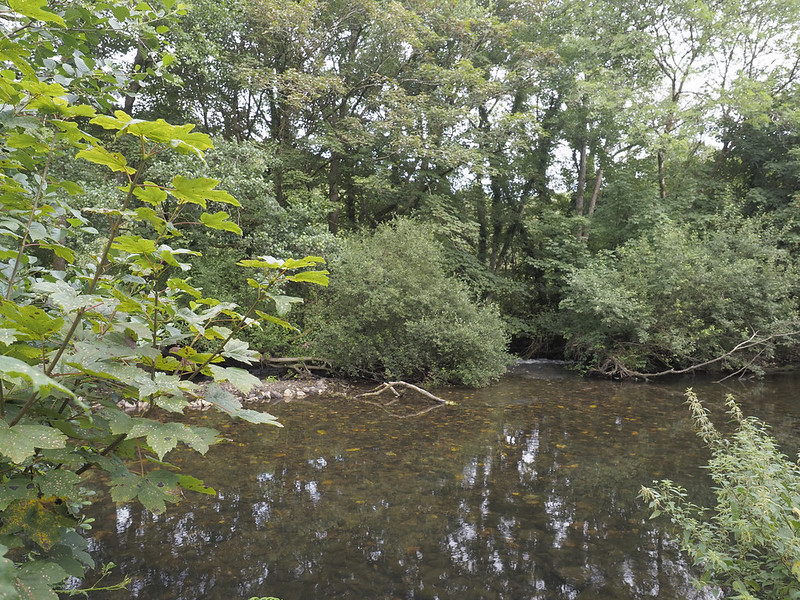
A quiet spot on the river Lynher with plenty of overhanging banckside vegetation – an ideal spot for Beautiful Demoiselles.
I had photographed Beautiful Demoiselles on previous occasions and so knew the best spots to find them. Overhanging bank-side vegetation is usually a good place to start as this is where males like to rest while waiting for approaching females. I remembered from previous years, an area near the bank-side marked by a fallen tree with branches overhanging the transparent, free flowing water. The fallen trunk was still there, exactly as I remembered, impenetrable, as if rooted to the earth. Its solid and sculpted form provided an ideal platform from which to sit quietly, pause and watch whatever the flowing river would conjure up.
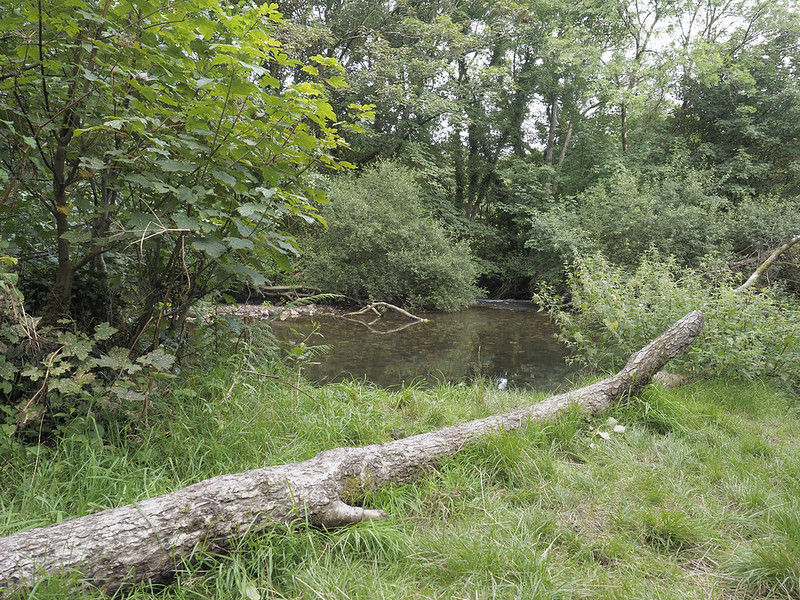
Fallen tree trunk provided a welcome platform from which to sit down and quietly observe the Beautiful Demoiselles.
All appeared calm and peaceful until looking down towards the water’s surface, shifting amorphous patterns seemed to emerge. Dancing to the tune of the dappled sunlight the river seemed alive and pulsating. Looking, closer still, stick-like angular forms then appeared, punctuating the delicate membranous surface while joining in the rhythmic beat. These were pond-skaters, a type of pond beetle often seen in large groups skating around on the water’s surface while feeding off smaller insects. Commonly known as water skeeters, water scooters, water bugs, pond skaters, water skippers or water skimmers – all appropriate names alluding to their ability to glide on the water’s surface.
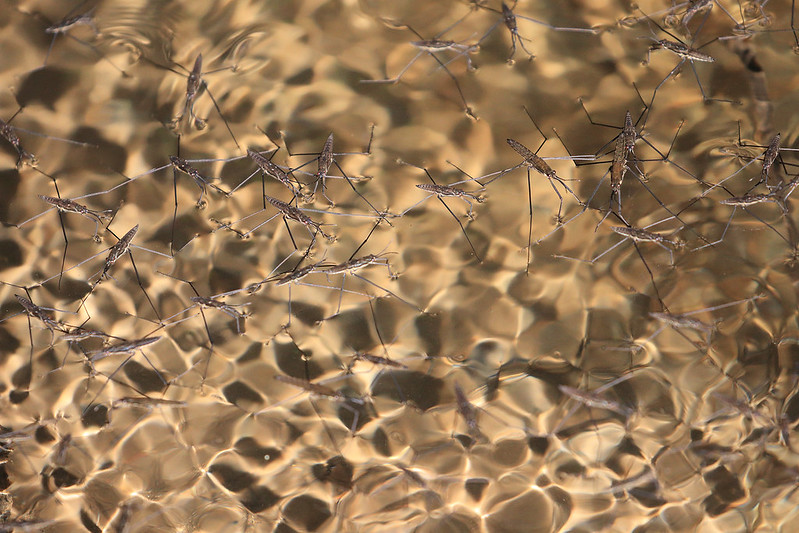
Pond Skaters dancing on the water’s delicate, membranous surface.
Sitting and watching quietly, it wasn’t long before I spotted a Beautiful Demoiselle perching on a nearby leaf. Its often confused with a dragonfly, but it is infact a large damselfly. Similar in shape to dragonflies but much smaller and daintier, with needle-like bodies in jewel-like shades of red, blue and green. The two largest (the Beautiful Demoiselle and Banded) have coloured wings and a flopping flight that lent them to the apt folk name of ‘water butterflies’. Damselflies, too, are hunters of small insects, but they are also food for larger dragonflies. Because dragonflies and damselflies can be watched with binoculars, they have become popular with birdwatchers – almost honorary birds – and today are second to butterflies in popularity. Just like butterflies they also have an organisation, The British Dragonfly Society – dedicated to the promotion, study and conservation of their natural habitats.
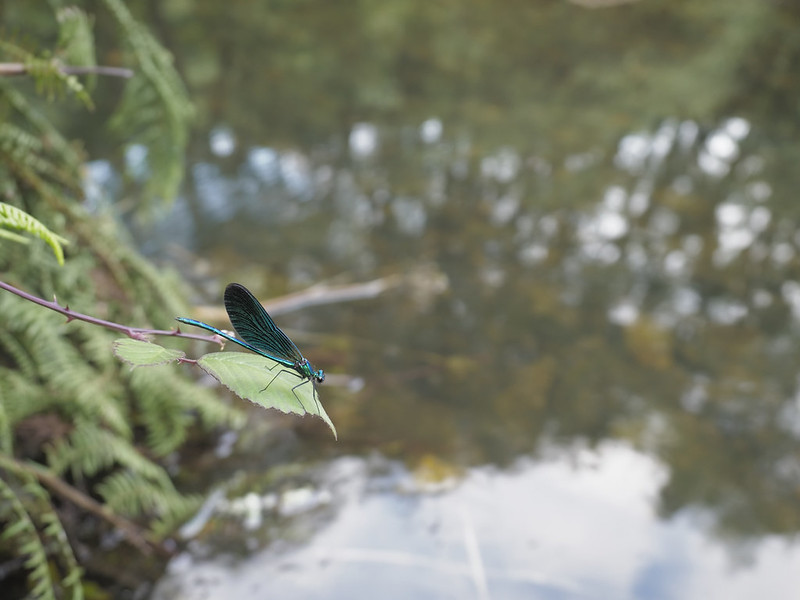
Top: A Beautiful Demoiselle perching on a nearby leaf.
Bottom: With my legs overhanging from the bankside it wasn’t long before a Beautiful Demoiselle decided to rest on my boot!
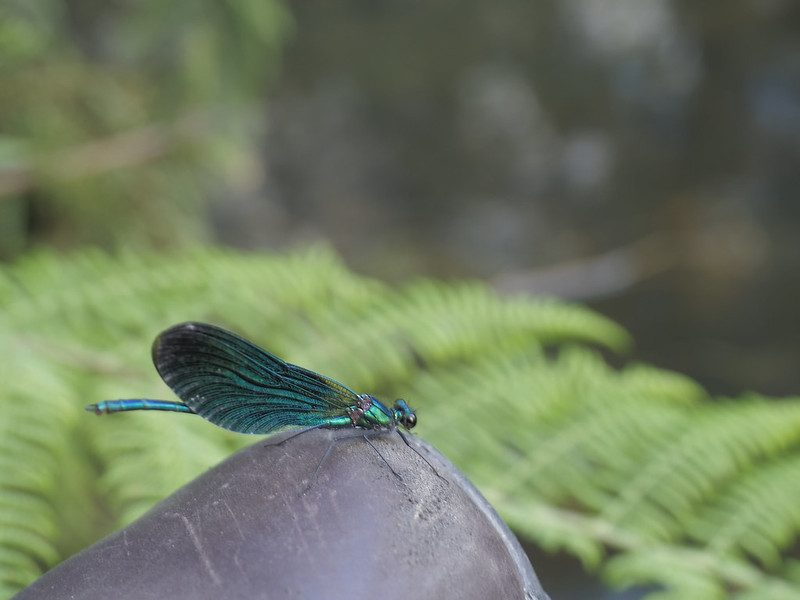
The Male Beautiful Demoiselles have dark-coloured wings and metallic blue-green bodies; females have brown wings and green bodies and are far more secretive, preferring to keep a lower profile in order to avoid the annoying attentions of sex driven males. While perching the males are constantly on the look out for competing males and should any invade their territory they will quickly dispatch them off in no uncertain terms. Should a female pass-by then the male will be seen flirting and fluttering as he tries to attract her with impressive dance moves!
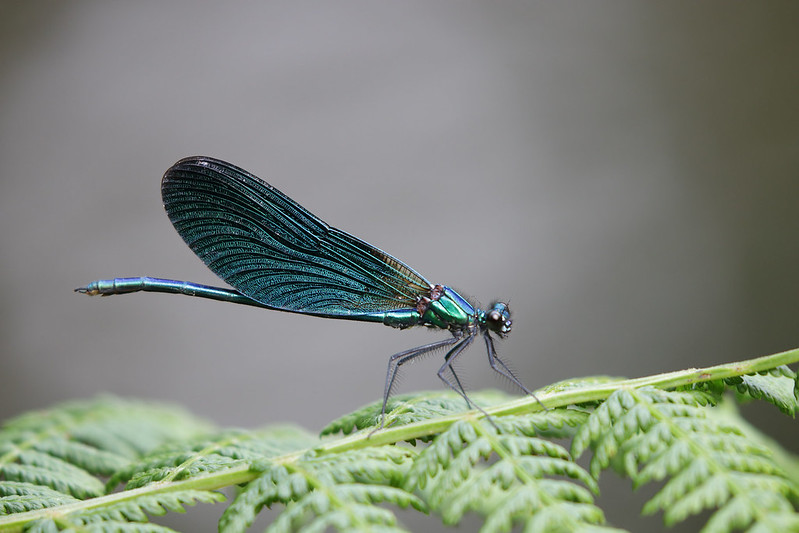
Top: The Males have dark-coloured wings and metallic blue-green bodies.
Bottom: Females have brown wings and green bodies.
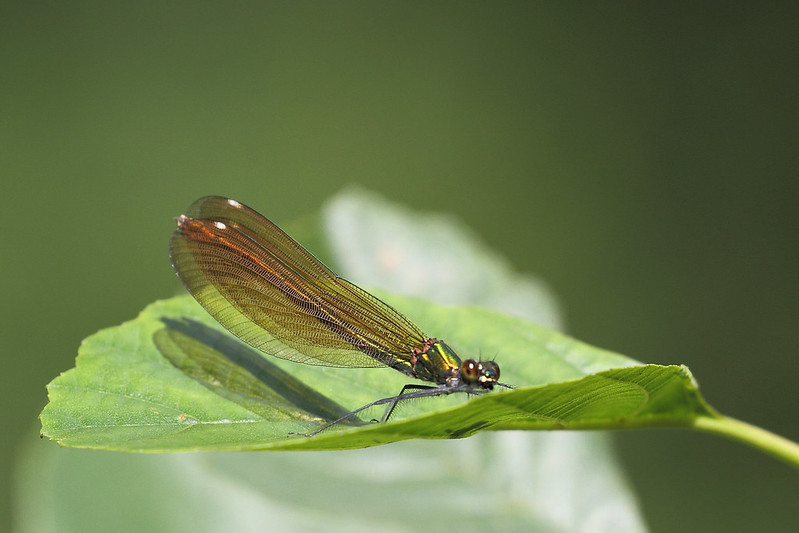
I spent the whole afternoon watching these fascinating creatures. With the chill of evening and the falling light, the Demoiselles disappeared, preferring to bed-in for the night and hide within some dark sheltered undergrowth. These sun loving creatures, with their fairy-like wings and black, impenetrable, bulging and large demonic eyes are perhaps more the stuff of dreams and the unconscious. In times-past they were feared by superstitious folk as a kind of devil’s insect. Though they are completely harmless, country lore insisted that at least the larger ones could bite or sting! This might have been inferred by their apparently aggressive behaviour to one-another or perhaps because of their scary looking serrated mandibles (used to chop their victims up into tiny morssals). This must have helped forge a reputation as sinister, evil-natured insects. However, there was another reason for fearing them. Medieval fabulists believed on the basis of certain signs that dragonflies and damselflies were in league with the devil. Some saw them as poisonous winged snakes, others as animated bolts or arrows, or even as devilish darning needles. This superstitious mumbo-jumbo is with us to this day, ingrained in language we need look no further than Spain to find that damselflies are called ‘caballitos del diablo’ which literally translates as ‘the devil’s horses’.
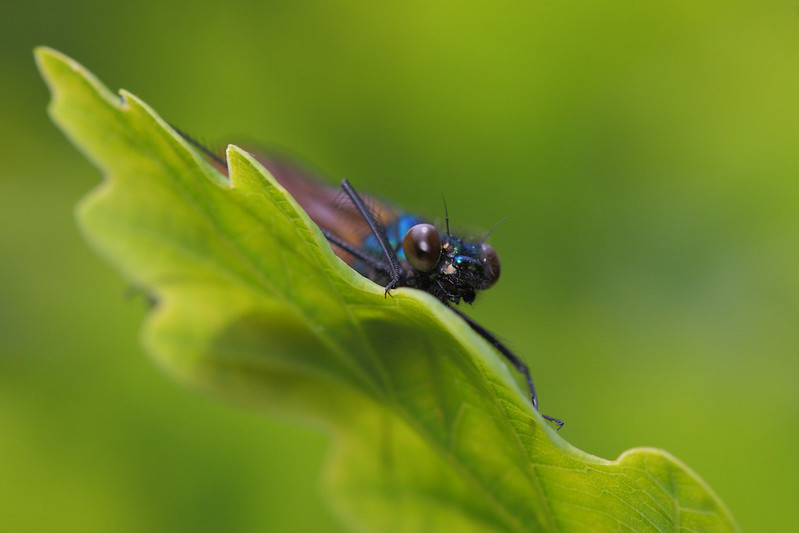
With bulging and large demonic eyes they look more like creatures from some fantasy underworld.
In contrast, the folk-lore of Dragonflies and Damselflies in the Far East is far more positive. In Japan, they are revered above all insects as cultural symbols, embodying the spirit of the rice plant and so as a harbinger of good harvest. The very name for Japan is Akitsushmi, or ‘dragonfly island’. The cultural status of dragonflies and damselflies in China and other Far Eastern countries is almost equally exalted.
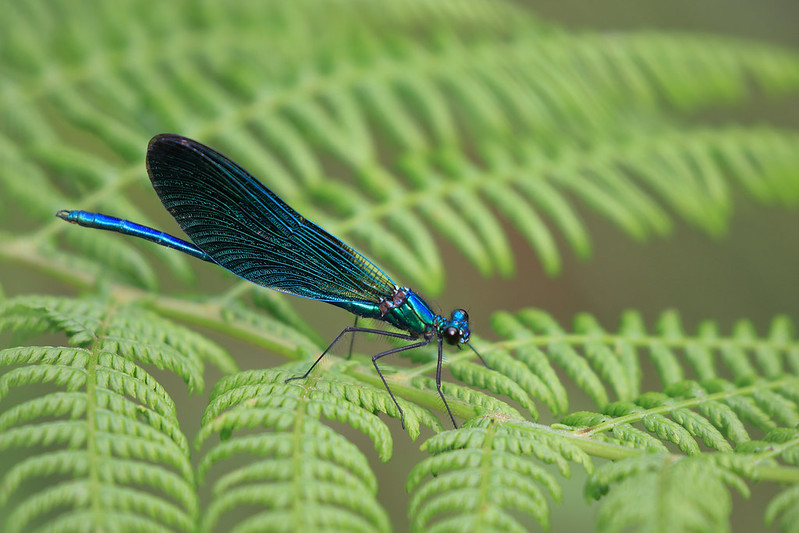
Beautiful Demoiselle is an appropriate name for such a stunning creature and its little wonder why they are so revered in the Far East.
Evil or Good omen – the Beautiful Demoiselle certainly left an unforgettable and indelible impression on me. Come next summer, I’ll be visiting the river Lynher again, in search of these most beautiful and illusive of creatures. Or perhaps, they will be the visitors, fluttering between the threshold of consciousness and unconsciousness, light and dark, reason and dream.
Below are more pictures of Beautiful Demoiselles captured from my visit to the river Lynher.
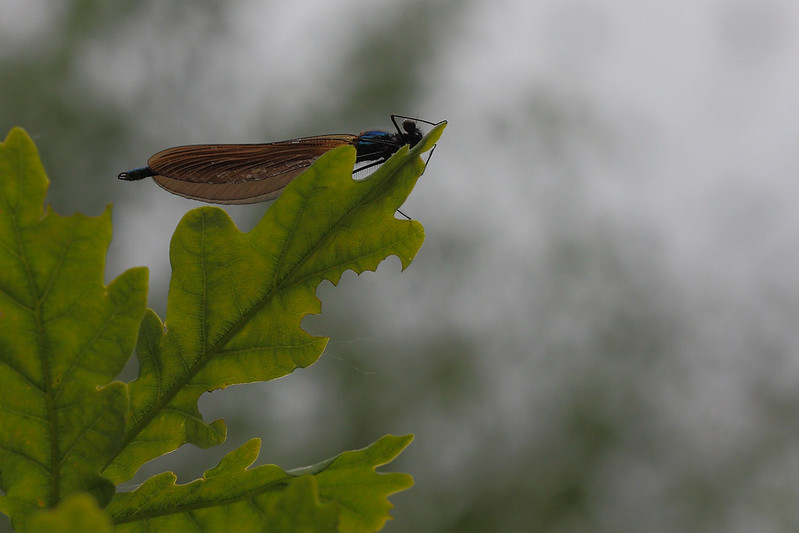
On guard duties while perching high above on an oak leaf.
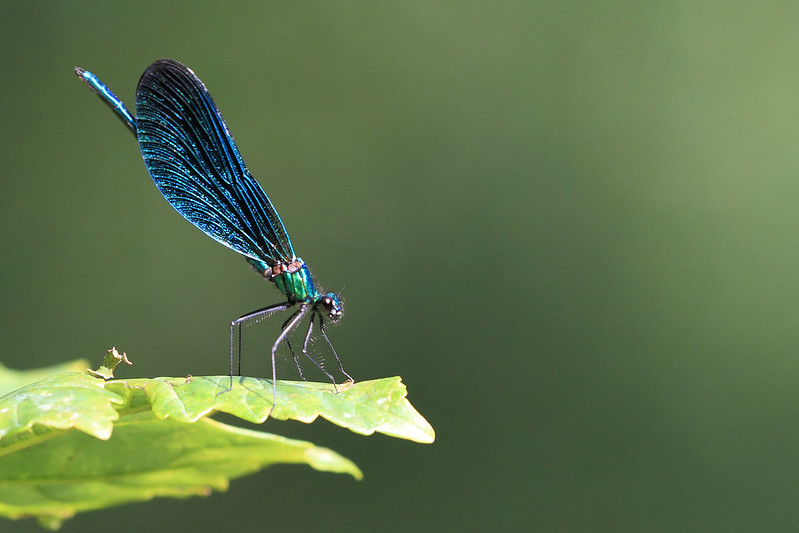
Top and Bottom: Raising his abdomen as if ready to pounce, this male is ready for action!
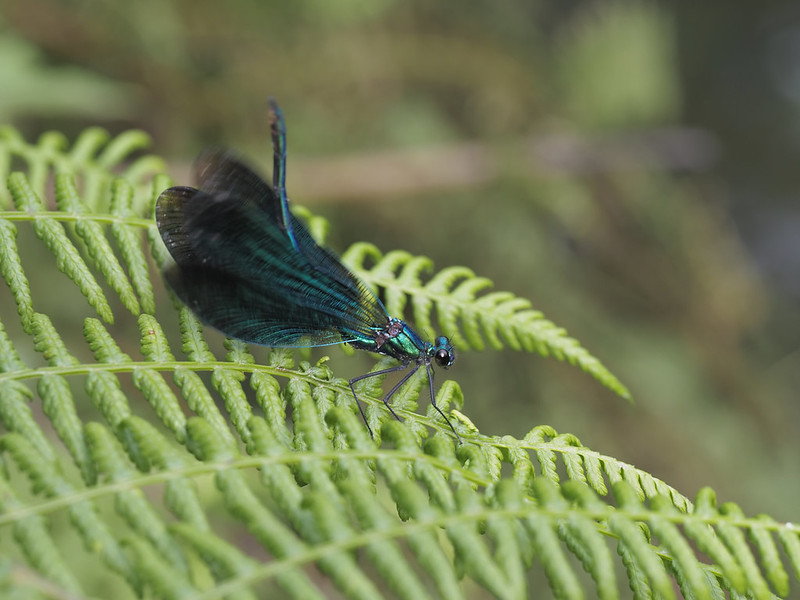
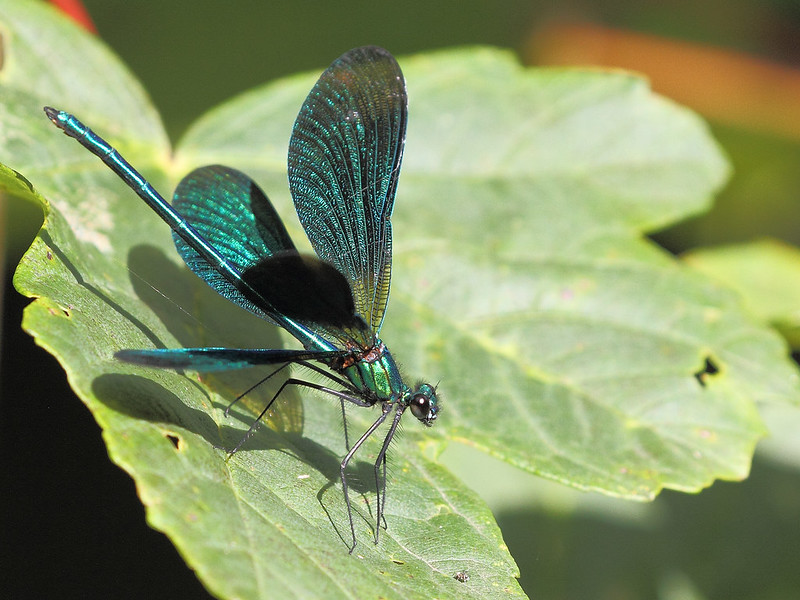
Top and Bottom: The male will be seen flirting and fluttering his wings as he tries to attract a female with impressive dance moves!
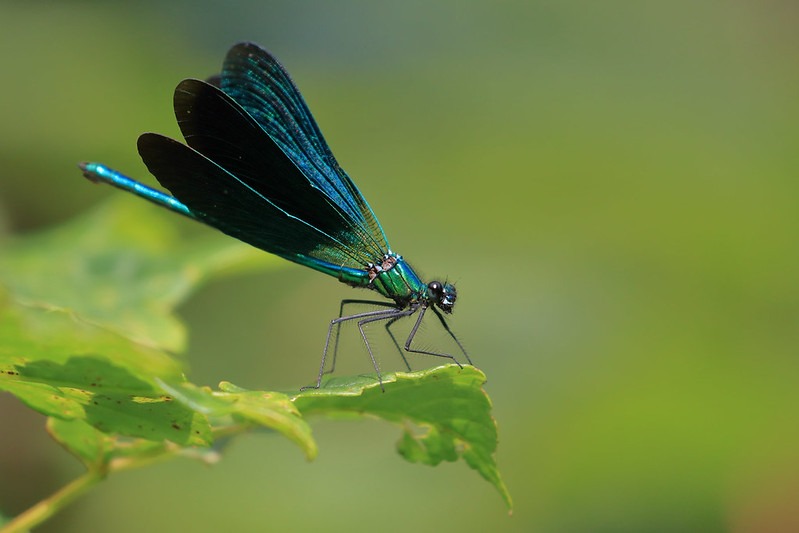
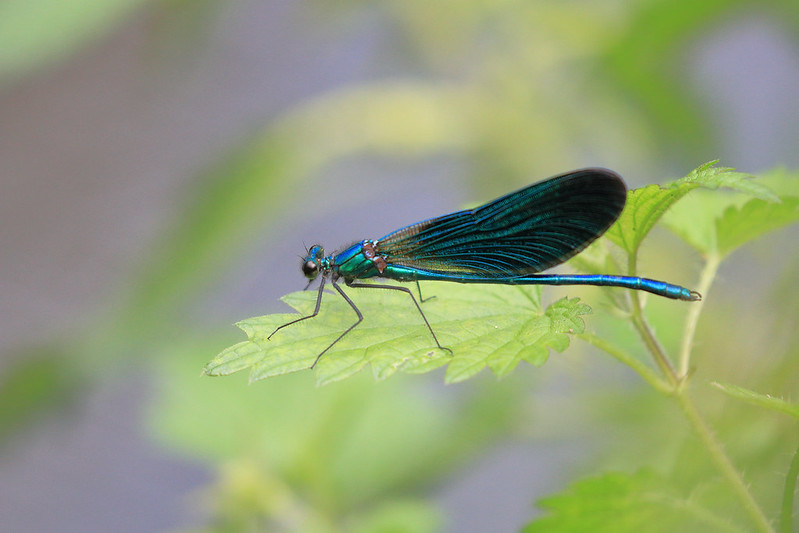
Top and Bottom: Males are much easier to spot than females and they often return to their favourite perching spots which are usually on bank-side vegetation.
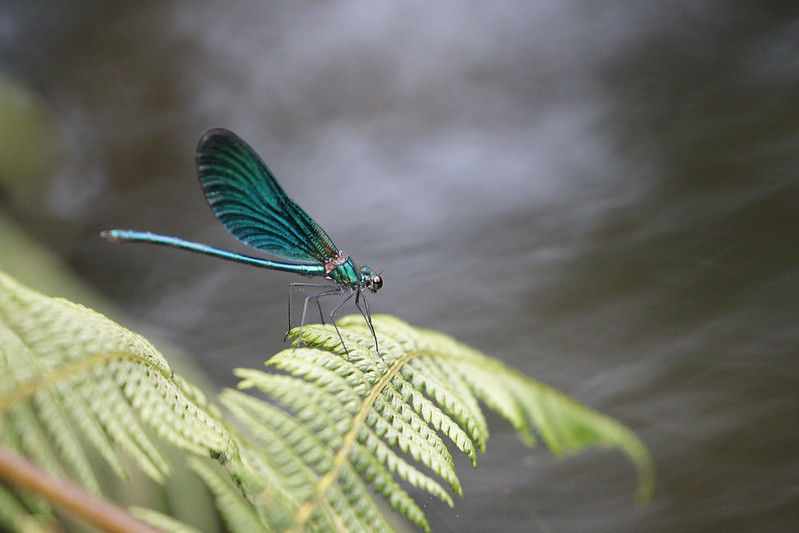
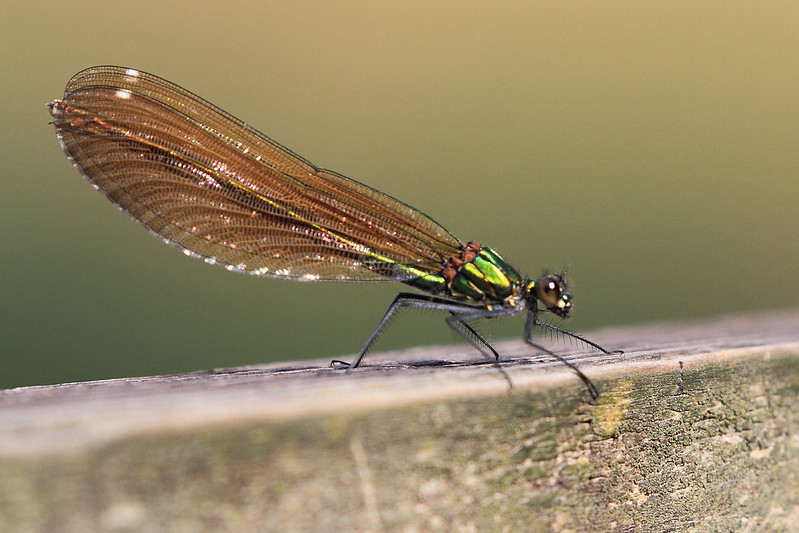
Females are far more secretive and will often be found away from the river and the attentions of competing males.

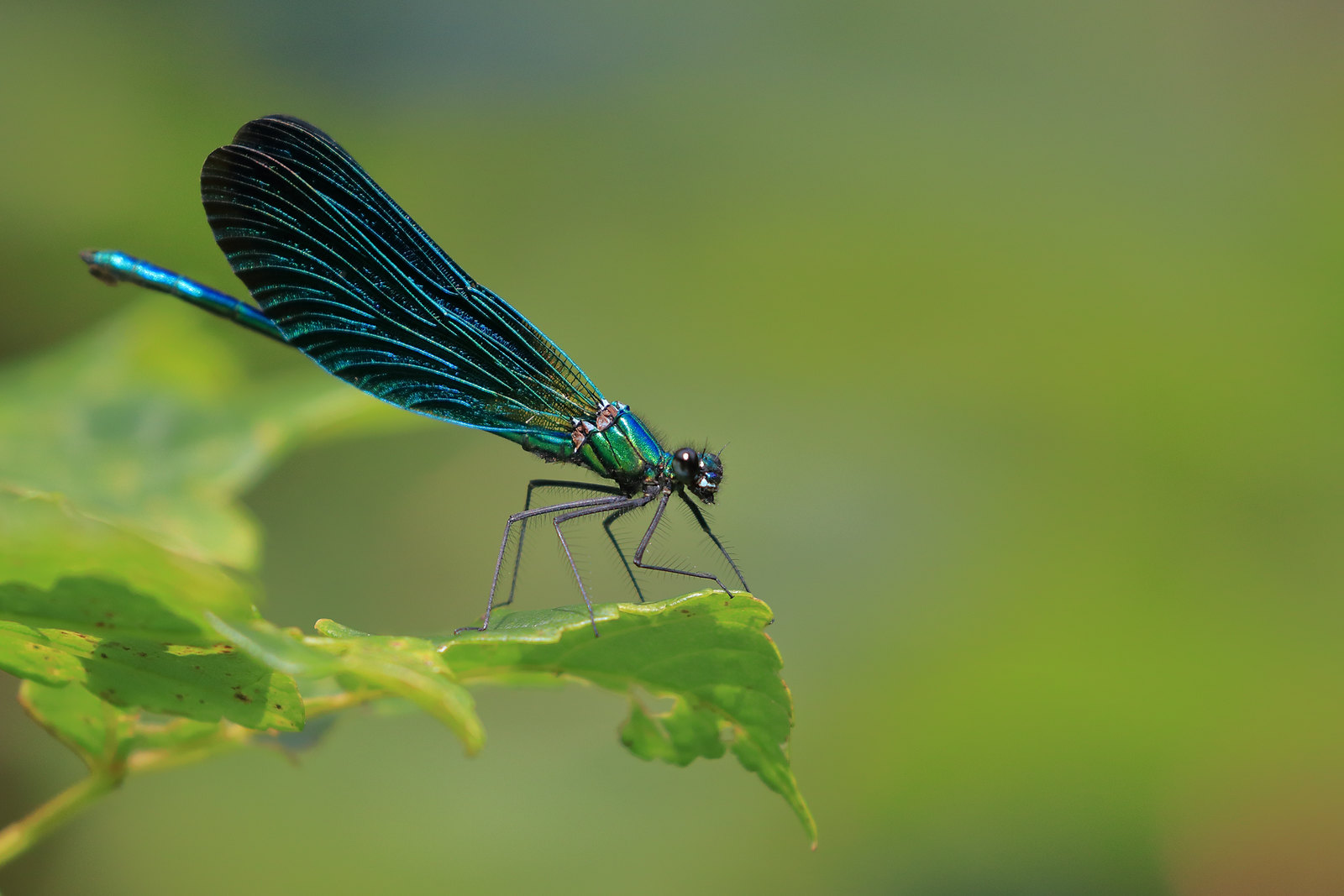
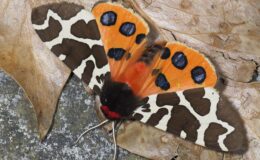

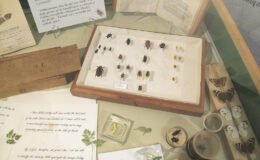
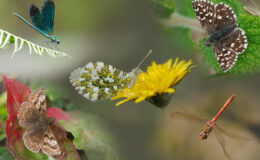
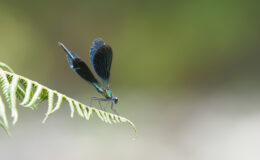
Leave a Comment